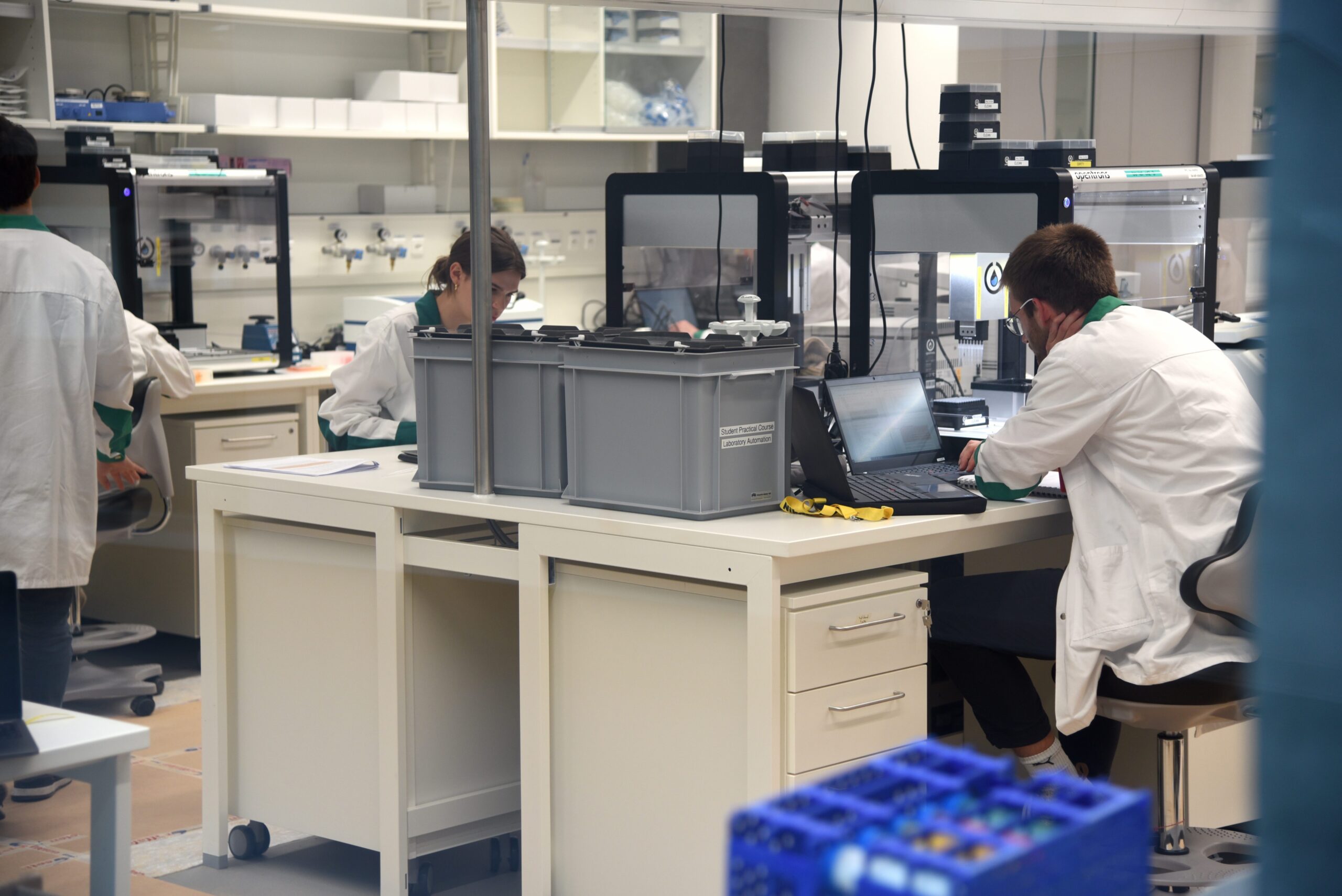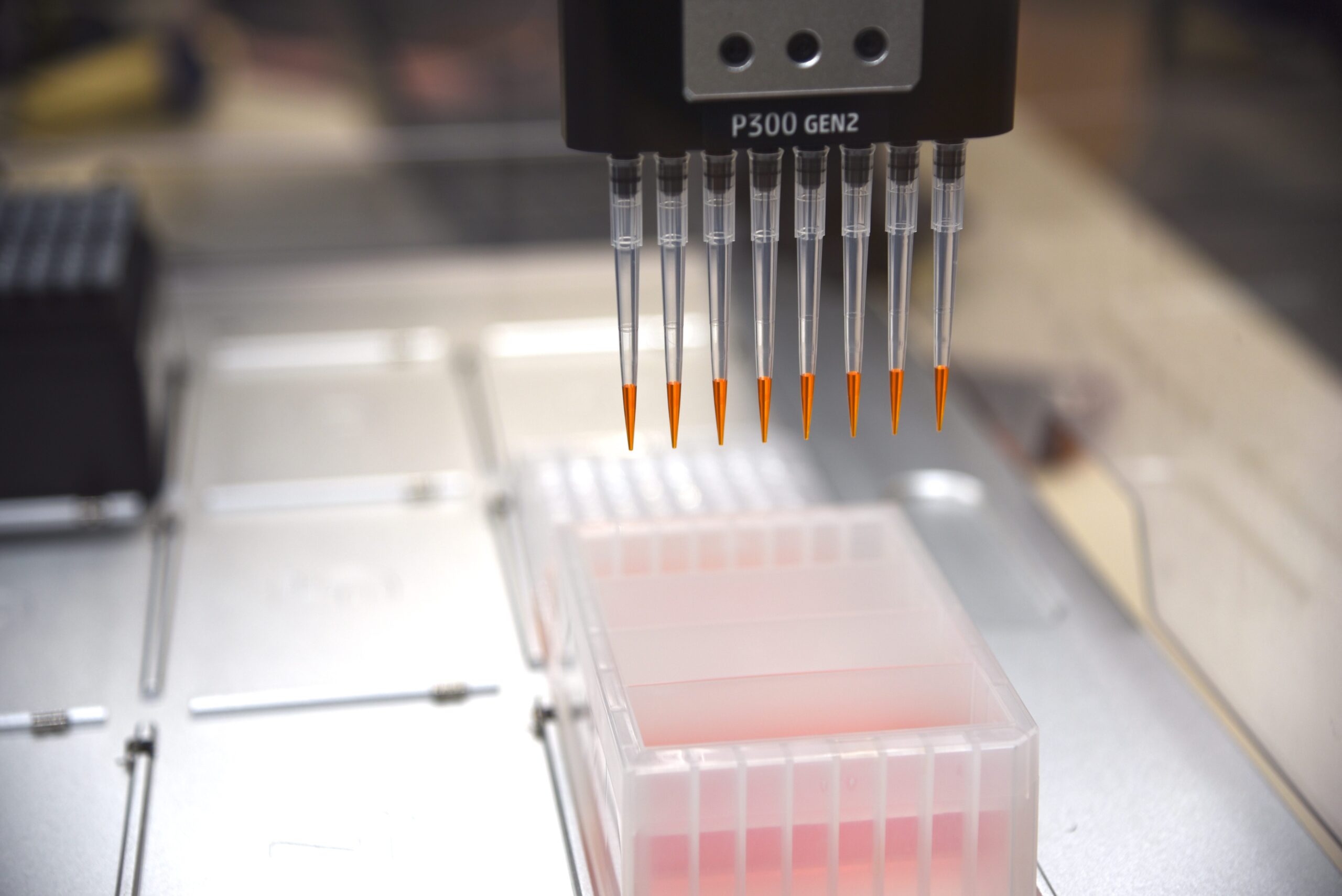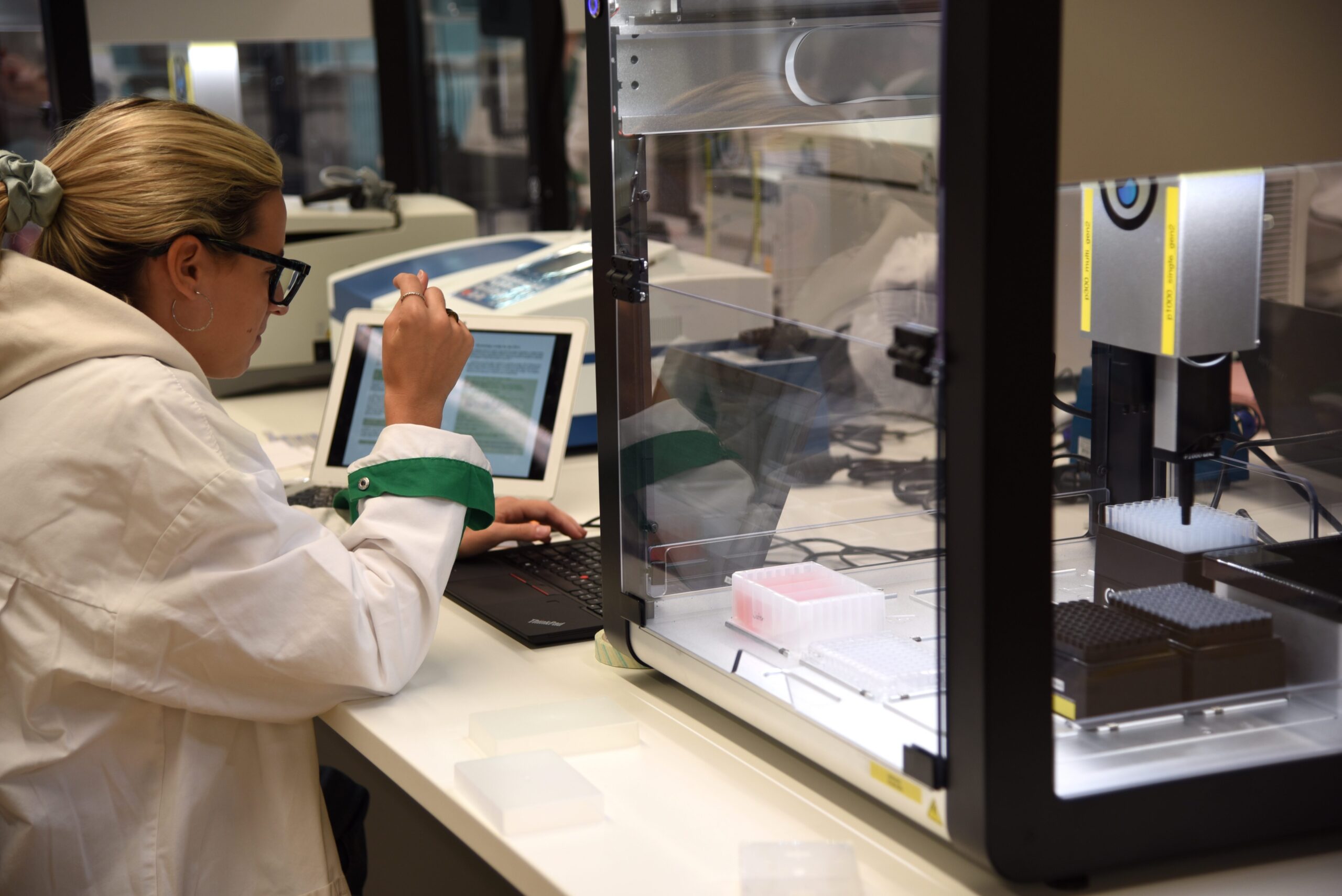
Opentrons has recently launched an education initiative with the goal of making lab automation skills universal. As part of this initiative, we’re speaking with educators across the globe who are using the OT-2 automatic liquid handler robot in teaching settings to see what they’ve been up to. Here are our takeaways from our conversation with ETH Zurich scientist, Dr. Daniel Gerngross:

Educator Profile
Daniel is an Automation Scientist at a central scientific automation facility of the Swiss Federal Institute of Technology Zurich (ETH Zurich). The ETH is a public university with a long-standing history of notable alumni including Albert Einstein, and is consistently ranking as one of the top 10 universities worldwide. After completing his PhD in Synthetic Biology, Daniel shifted to lab automation as his PhD project increasingly involved developing and applying lab automation protocols.
The automation facility is located at the Department of Biosystems Science and Engineering (D-BSSE) in Basel, where research is often interdisciplinary across experimental biology, computational biology, and engineering. The department collaborates with industry and international partners, advancing basic and applied sciences, that translate to applicable products and processes in biotech, pharmaceuticals, and chemical industries.
Educational Objectives
A teaching grant of the ETH and support of the department made it possible to procure eight OT-2 liquid handling robots to establish a lab course module for biotechnology master students to impart knowledge on basic principles of automation and liquid handling. Upon completing this module, students gain confidence working with the OT-2 robot, practice programming the OT-2 using Python scripts, and develop critical thinking skills applicable to automated processes. These skills improve students’ future career opportunities, and, in some cases, experience in this module has explicitly led to securing pharmaceutical internships.
Context and Implementation
The automation module is part of a 10-day lab course that introduces the students to modern lab methods, including flow cytometry, fluorescence light microscopy, and image analysis. The module introducing the OT-2 automation takes two days for the students to complete, focusing first on the basics of coding with Python and manual pipetting techniques. Because the students in the course have varying levels of experience in programming and liquid handling, the first part of the module gets everyone on the same page.
During the module, students learn how to program the automated liquid handler robot using Jupyter Notebook. Due to time constraints, the OT-2 setup is simple, with just the multichannel and single channel pipette introduced and using food dye instead of reagents. Challenges progress from straightforward pipetting tasks, to medium exchange, to mixing difficult to pipette reagents (70% ethanol or 70% glycerol) in varying ratios on a 384-well plate.
Unlike many other educational automation settings, this class has access to eight OT-2 automated liquid handler robots. Though approximately 30 students enroll in the course, the students rotate in small subgroups through the modules, meaning the course can maintain a one-to-one ratio of students to robots.

Results and impact
Students who include their experience with the OT-2 on their CVs benefit from improved career prospects. As Daniel highlights, this benefit “Is not a perception. Working with the OT-2 resulted in real career opportunities. Several students received opportunities for internships from local Pharma companies in Basel who were specifically looking for students with experience with the OT-2.” As lab automation skill sets become more and more desirable, Daniel anticipates further benefits of developing these skills in master’s-level biotech students.
Daniel and his team are planning to include more complex automated liquid handling modules in the course, such as PCR cyclers or heaters that closely resemble protocols used frequently in labs. As the course is expected to double in the next few years, they’re looking to expand their fleet of the OT-2 through Opentrons for Education.
Masters students and their supervisors within the department are also invited to use the OT-2 for thesis projects to further explore real-world applications.

Conclusion
Utilizing the OT-2 in this master’s-level biotechnology module has opened students up to greater industry career opportunities and problem-solving exercises that are applicable to real-world labs. And, as Daniel says, students are aware that they should be developing skills in automation: “I have the feeling that the students understand that lab automation will be more and more impactful and therefore it’s important to have some skill sets in this field”
Since its introduction, use of the OT-2 in the course has improved student engagement and helped them think creatively about incorporating robots in their thesis projects.